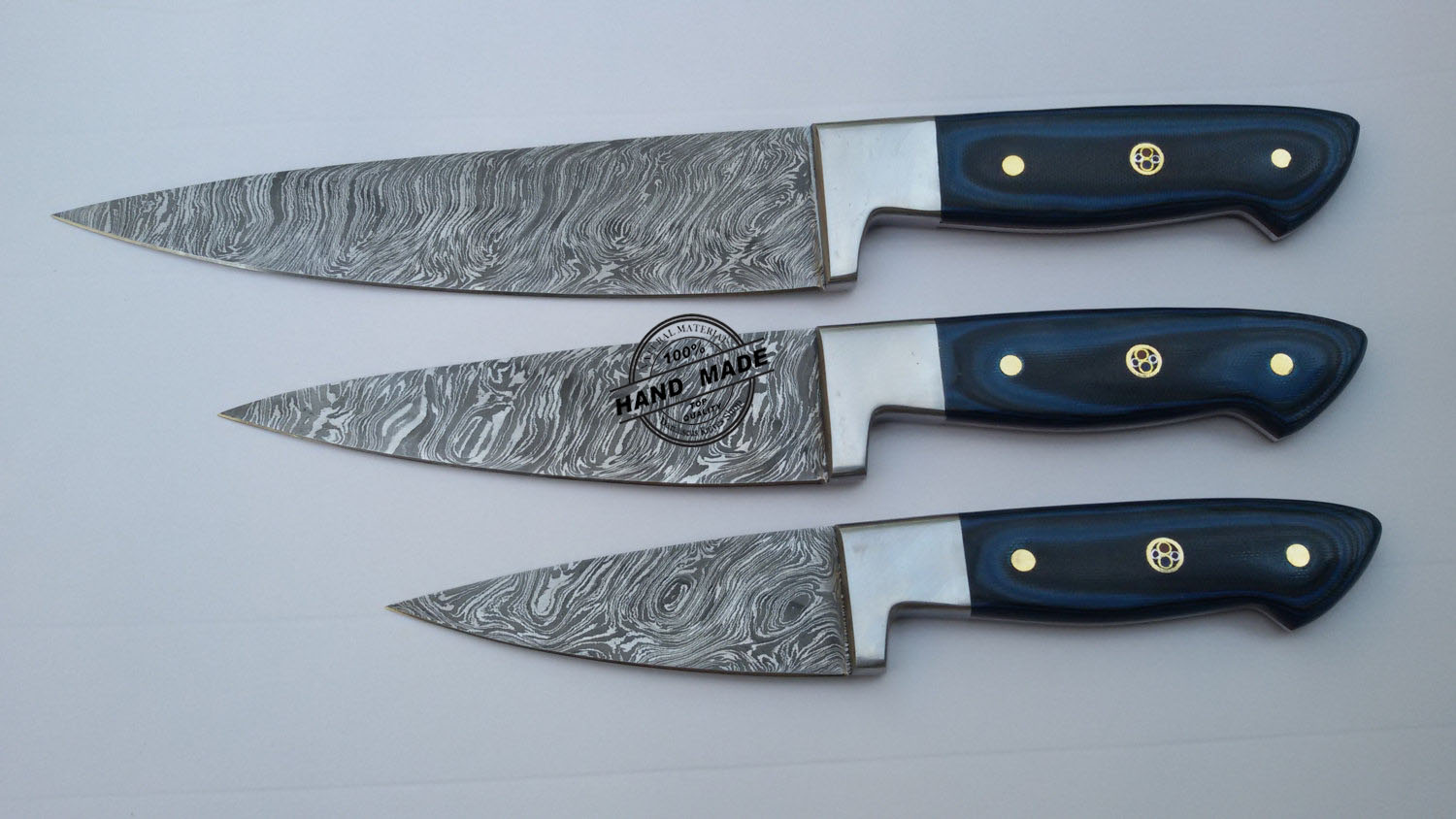 Is the Damascus steel made today the same as the Damascus steel made centuries ago?
Is the Damascus steel made today the same as the Damascus steel made centuries ago?
It is important to understand the history, the mystery and the tradition surrounding this lost art long ago and how today's Damascus Steel is measured.
Since history can document, knives and swords were made with carbon steel, hand-forged by blacksmiths whose art defined entire cultures. Once you hold and swing a Damascus steel blade in your hand, you will realize the quality and history that are now part of your Legacy. Carbon steel blades when properly maintained, improve with use. Regular grinding and a simple application of oil is all that is needed.
The traditional steel knives and swords of Damascus dominated the armament from the Iron Age to the Viking Age. It was said that Alexander the Great had a Damascus sword, and even Aristotle commented on the high quality Damascus steel blade. Its origins date back to 500 d. C. In India it was commonly known as Wootz or Ukka Steel. Then he discovered that it was the road to Damascus, Syria, which was the trading center of that region for war equipment, such as knives, swords and armor. Damascus Steel was the name that the Crusaders gave to the steel they had seen cutting their own lower quality swords, cutting the sword in half with a single blow without losing its edge.
The steel that the swordsmen of ancient Damascus forged was a secret so well guarded that it can not be perfectly replicated, even today. The process was lost to the blacksmiths of the Middle East around 1750 AD. C., possibly because the mineral sources containing small amounts of tungsten and / or vanadium necessary for its production were exhausted.
Modern Day Damascus Steel or "Pattern Welded Steel" is a sought-after blade, not only for its quality and beauty, but also for the mystery and history that surrounds it continuously, intriguing others to own a small part of it. The process has existed for thousands of years, but even with a little modern technology, the smithy that enters one of our knives is still a true art form that is a process of countless hours of work that has taken many years to master . .
The welding of patterns consists of taking multiple layers of metal, folding them and joining them by means of welding of forging. Our Damascus steel blades are made of 1095 carbon steel and a nickel steel called 15N20. Nickel in steel resists acid etching, giving the blade the brightest layers you see in a particular pattern. Getting the exact carbon content in the steel mix is where art and true science come together. If you get too much carbon, you get a pile of cast iron, and if it's too little, you get a pile of wrought iron. Perfectly combining these two types of steel gives you an incredibly strong and flexible blade that will maintain a razor's edge at a HRC of 56-58.
Steel for pattern welding is like using building blocks. The different steels are stacked in a pattern in a block or billet and welded together. The billet is placed under extreme heat and hammered into a single piece of steel. This piece is drastically diluted. The smith bends the steel again and again, then repeats the process several times. Most Damascus patterns have been stacked or twisted to give each leaf its unique pattern. Depending on the design of the blade, it will have from 250 layers to more than 500 layers. This bending and handling of the steel is what makes it strong, as well as the beautiful pattern on the finished sheet. This whole process gives you a sharper blade than other common steels. Finally, after sharpening the blade of the Damascus knives, they are placed in the oven until it reaches 1500 degrees. Then it is removed and turned off in oil. The blade should be tempered so that it is heated again at 425 degrees for approximately two hours. After cooling, sand it with fine sandpaper and sharpen it. The engraving on the blade is done by using a mixture of acid and water to eat the softest metal that reveals the Damascus pattern. The final result of our knives is an incredible knife that is very sharp with a HRC of 56-58.
There is something to be said about having a reliable knife that you can rely on day after day. Our mission at Cold Steel Outdoors is to provide "that knife", which can be passed on from generation to generation. A world-class knife with superior craftsmanship and blacksmithing that will rival any knife in the market. One that will maintain a knife edge and will take care of any task of a true hunter or nature lovers. Our Damascus steel knives are all this as well as being a unique and handcrafted work of art. Each blade is forged and crafted for hours and hours until the masterpiece dstir of each blade. One can not really appreciate one of our world-class Damascus steel knives until you feel that you forged Cold Steel in your hand and it becomes one of your essential and trusted tools as you experience the Great Outdoors.We are dedicated to making custom Handmade Damascus Steel Brass Bolster knives with traditional, high specifications and handmade touch.